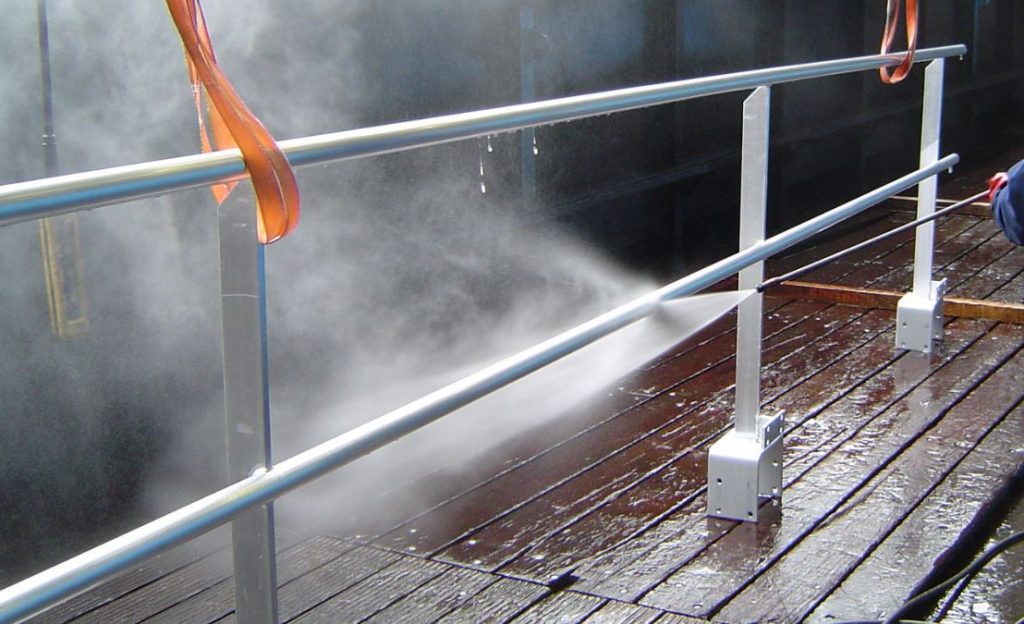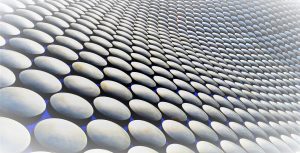Afther the production process, the aluminium surface has become contaminated with grease, oil and atmospheric pollution and possibly initial corrosion (aluminium oxides). To remove these contaminations it is necessary to degrease and pickle the aluminium.
What is aluminium?
Aluminium is one of the most common elements on earth. It is almost twice as prevalent as iron. Because of its many advantageous properties, such as low specific gravity and good corrosion resistance it has an extensive range of applications. The production of aluminium takes place by the electrolysis of molten raw materials. Aluminium is alloyed to harden it and increase its strength.
Why surface treatment of aluminium?
The surface treatment of aluminium is done in baths composed specifically for this purpose or by spraying. Pickling of aluminium is frequently carried out to to provide a metallically clean surface for critical applications such as equipment for semi-conductor, medical and nuclear applications. Chromating of aluminium to improve its corrosion resistance in atmospheric environments or to provide a conversion layer that enhances the bonding of coating systems, can be offered.
Negative influences on aluminium
- Atmospheric contamination;
- Acids and uren en alkalines;
- Contamination with free iron.
The pickling process
During the pickling process:
- the abovementioned contamination is removed from the aluminium surface to make it suitable for the possible application of a conversion coating;
- the surface is given a uniform, mat or semi-mat appearance.
After the pickling process, rinsing with demineralised water takes place so the aluminium protects itself against corrosion by oxidation with the oxygen in the air. As a result it is possible to process the aluminium, also if no conversion coating is applied. This process of natural oxidation is called passivation.
If no or only part pickling/passivation takes place, the aluminium will be insufficiently protected.
In this situation, depending on whether further treatment of the aluminium takes place, the following will occur:
- If no further treatment of the aluminium is planned:
The aluminium does not have good corrosion resistance because there is no fully sealing oxide skin on the metal. All sorts of inclusions in the oxide skin can, certainly in a moist environment, initiate corrosion so aluminium oxides (white deposit) originate on the aluminium surface. This process accelerates itself. - If further treatment (application of a conversion coating) of the aluminium is planned:
Because there is still contamination on the surface (due to no or poor pickling) the application of a good conversion coating is impeded by corrosion below the conversion coating and poor adhesion to the aluminium.
It is accordingly of the utmost importance to have a completely clean oxide skin before applying a conversion coating. The aluminium is then in optimal condition for further chemical treatment.

How does the pickling process work? Aluminium is an amphoteric metal, meaning the metal dissolves in either an acid or alkaline environment. This also applies for aluminium oxide (Al2O3).
1. Alkaline pickling of aluminium
Alkaline cleaners are divided into etching and not or barely etching cleaners. A higher lye concentration and a higher temperature accelerate the pickling process, but as a result the pickled surface is also rougher. Strongly etching cleaners, usually based on sodium hydroxide, are used if there is a thick oxide skin or if degreasing must take place. This is a very fast pickling process with a mat exterior quickly originating. Not or barely etching cleaners based on silicates and carbonates are used if there are only small amounts of grease or oil on the aluminium surface.
General pickling conditions:
- Temperature: 50 - 70°C
- Time: 5 - 15 minutes
2. Acid pickling of aluminium
Pickling process based on nitric acid
A limitation of alkaline pickling is that with certain aluminium alloys containing copper or zinc a grey or black deposit can sometimes originate that is difficult to rinse off. To remove this deposit these alloys are then immersed in nitric acid. Aluminium is barely affected by nitric acid. This means pickling can take place for several hours at ambient temperature if the concentration of nitric acid is not too high. The big advantage of this process is that a piping system can be cleaned in circulation, for example. The other pickling processes have a too short pickling time to be useable in practice.
Pickling process based on nitric acid – hydrofluoric acid
This is a very fast smoothing pickling process that gives an attractive and uniform mat effect.
Pickling conditions:
- Temperature: ambient temperature
- Time: 1 - 10 minutes
If the aluminium contains silicon as an alloy element this is also the appropriate pickling method.
Pickling process based on phosphoric acid
This pickling agent is only effective if the oxide skin is very thin. Thicker oxide layers require the addition of fluoride to the phosphoric acid solution. Pickling in phosphoric acid causes a phosphate coat to form that can serve as a primer for a coat of lacquer or paint. The phosphate coat is a conversion coating with improved adhesive properties.
